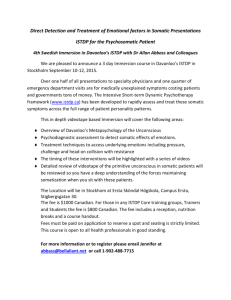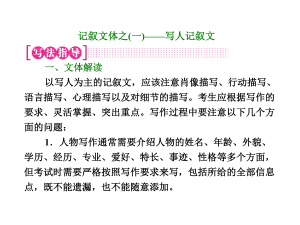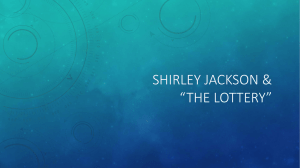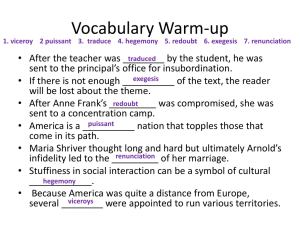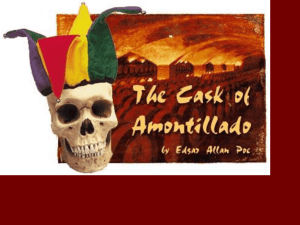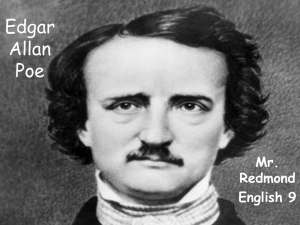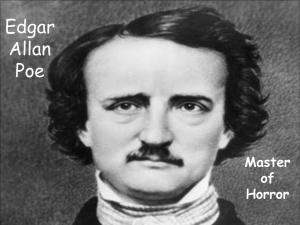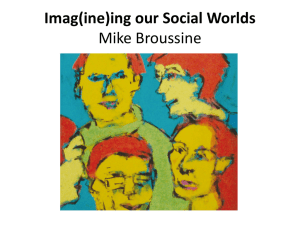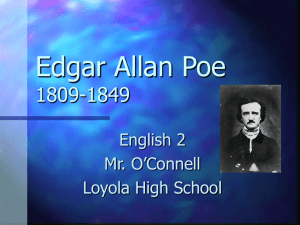Experiencing Love and Guilt about Rage - istdp-uk
advertisement
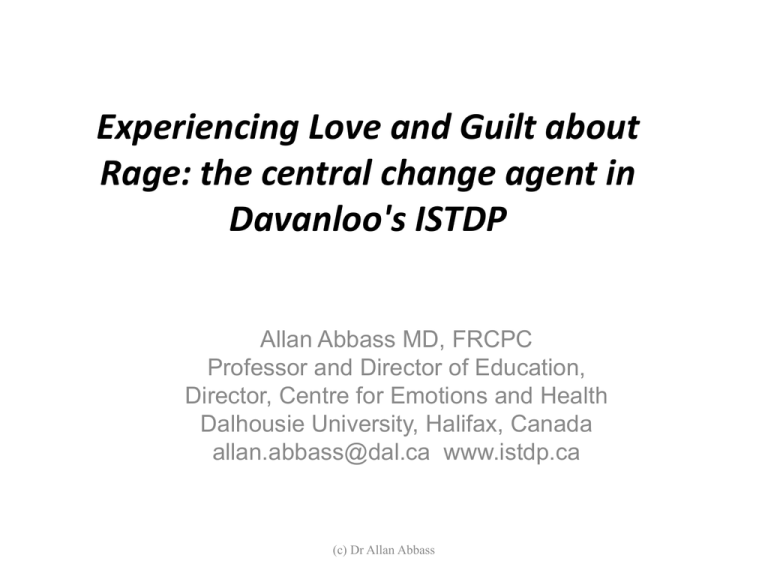
Experiencing Love and Guilt about Rage: the central change agent in Davanloo's ISTDP Allan Abbass MD, FRCPC Professor and Director of Education, Director, Centre for Emotions and Health Dalhousie University, Halifax, Canada allan.abbass@dal.ca www.istdp.ca (c) Dr Allan Abbass Overview • Davanloo’s “new metapsychology of the unconscious” • Clarifications of major technical interventions • Case example: The Angry Scientist (c) Dr Allan Abbass “The ISTDP therapist must have the utmost respect for the patient while at the same time no respect for the resistances that have paralyzed his or her functioning” (c) Dr Allan Abbass “The ISTDP therapist must have the utmost respect for the patient while at the same time no respect for the resistances that have paralyzed his or her functioning” These 2 processes should happen simultaneously: otherwise the process is splitting and can have negative effects (c) Dr Allan Abbass ISTDP Papers Since 1995 – Specific diagnosable patient categories – Central focus on the T – Specific interventions and timing – Specific responses relates to specific therapy events – How to identify and use specific unconscious signals – Specific techniques for fragile, somatizing and other patients – The somatic pathways of rage, guilt and grief – The need for continuous positive regard – Central role of love and forgiveness (c) Dr Allan Abbass The evolving Davanloo: 2012 + • • • • He still teaches Others teach for him He cites published research Acknowledges, including by letter, contributions of others • Is much clearer about technique, how it works and how to teach it. • Is clearer about the central role of love, attachment and forgiveness (c) Dr Allan Abbass Metapsychology of ISTDP Genesis of Psychoneurotic Disorders BOND PAIN RAGE, GUILT about the Rage Character problems Symptoms (c) Dr Allan Abbass Spectrum of Patients with Fragile Character Structure Spectrum of Psychoneurotic Disorders Low R Moderate R High R Mild Moderate Severe/ Borderline These are diagnosable and have different treatment pathways (c) Dr Allan Abbass Davanloo, 1995, Abbass 2002 Metapsychology of ISTDP Triangle of Conflict Unconscious Defence Unconscious Anxiety Striated Muscle Smooth Muscle Cognitive-perceptual Isolation Repression Projection Superego Unconscious Feelings Pain, Rage, Guilt, Grief (c) Dr Allan Abbass Psychodiagnosis Roadmap Clamp Resistance Unconscious Defenses Unconscious Anxiety Monitor Response Pressure Unconscious Feelings (c) Dr Allan Abbass 3 Categories of major resistance • Isolation of Affect – Talk about it without somatic experience • Repression – Shut down emotions unconsciously into the body or depression etc • Projection and Projective Identification (c) Dr Allan Abbass Resistance of the Punitive Superego Davanloo 1988 a and b • Manifestations: Repeated/chronic self defeat and self sabotage. • Origins: Violent and murderous rage toward loved ones and guilt about this rage. • Countless modes of presenting to psychology, medical, social and legal systems • IT is protective of others AND self-constrictive and selfpunitive (c) Dr Allan Abbass Complex Transference Feelings (CTF) I • Includes positive feelings and irritation toward the therapist which link to past feelings about the bond, trauma, pain, rage and guilt • Mobilizing CTF is the engine to the Unconscious Therapeutic Alliance. • The essential element of ISTDP is rise in CTF UTA • Mobilized by having an increasing lack of respect for the resistance in the service of assisting the patient to overcome these behaviors. (c) Dr Allan Abbass The central task of the ISTDP Therapist is to reach through the Resistance to the person stuck underneath (Pressure) If the patient is too weak to reach back then build capacity (Graded work and other elements) If they involuntarily resist in the transference help them see and overcome that barrier (Clarify, challenge and Head on collide) (c) Dr Allan Abbass This can only happen with continuous positive regard for the patient Coupled with this is a continuous negative regard for the resistances that are destroying the patient and his relationships (c) Dr Allan Abbass Interventions in 30 ISTDP Trial Therapies (Abbass, Joffres & Ogrodniczuk, 2009) Intervention Rate per hour Percent of all Pressure 97 59% Recapitulation 29 19% Clarification/challen 23 ge Inquiry 9 14% Dynamic Exploration 6 3% 5% (c) Dr Allan Abbass Pressure Davanloo 1999 • The mainstay intervention of ISTDP • Encouraging the patient to connect to his true feelings and be open with the therapist about these feelings. • = Reaching through resistance to the person underneath • Psychodiagnosis and Road map • Pressure increases CTF, UTA and Resistance (c) Dr Allan Abbass Technique of Unlocking the Unconscious Davanloo 1988-2001 UTA R CTF R UTA Pressure (c) Dr Allan Abbass “Unlocked” Challenge Davanloo 1999 – This is done only when the resistances are crystallizing in the therapeutic relationship (transference), when they are an obstruction to the therapeutic bond and task – First, clarify the defences with the Patient – Then pressure: encourage the patient to overcome the resistances with you – Finally, challenge the defences in concert with the patient. (c) Dr Allan Abbass Technique of Unlocking the Unconscious Davanloo 1988-2001 UTA R Resistance is in T Clarify CTF and Challenge Keep up Pressure UTA (c) Dr Allan Abbass R “Unlocked” Head on Collision Davanloo 1999 • With the resistances crystallized in the transference this most powerful intervention highlights the reality of – the limits of the therapist, – effects of resistance – potential of the alliance – And encourages the patient to do his or her best • Again, seldom used with low capacity patients. (c) Dr Allan Abbass Technique of Unlocking the Unconscious Davanloo 1988-2001 UTA R CTF Resistance in T Head on Collision Pressure Challenge R UTA (c) Dr Allan Abbass “Unlocked” Unlocking of the Unconscious – CTF are experienced: anxiety and defence are removed or reduced – UTA is greater than resistance – Partial versus major versus extended unlocking • Partial: Link to past • Major: Image changes to the past person • Extended: During breakthrough of rage the image is the past person (c) Dr Allan Abbass Central Dynamic Sequence • Systematic Analysis of the Transference –Extensive Cognitive Recap of findings –Collaborative and repetitive –Extremely important in patients with panic, somatization, depressive disorders and fragile character structure (c) Dr Allan Abbass Inquiry Experience Feelings Low Resistance Resistance goes up Experience Feelings Pressure Moderate Resistance Resistance goes into the T Clarify and Challenge Go flat at any point Experience Feelings Depression, Somatization, Fragile (c) Dr Allan Abbass High Resistance Graded Format to build Capacity Graded Format: 1. Pressure to feelings or to defences 2. Rise in complex feelings and anxiety 3. Intellectual recap to bring down anxiety 1 Anxiety 2 (c) Dr Allan Abbass Summary • ISTDP takes place via continuous positive regard for the patient • Out of that positive regard there is a continuous pressure on or disrespect for the resistances that paralyze his or her functioning. • This complex stance brings the UTA • Specific diagnostic system and treatment system • Specific interventions, timed and dictated by the format of unc anxiety, resistance, state of complex feelings and UTA – Pressure vs Challenge vs Head on Collision (c) Dr Allan Abbass Immersion Training • Halifax Canada September 24-27: Focus on detecting mobilzation of the Unconscious. Plus 6 quest speakers • Stockholm: October 18-21, 2012: Overview and psychodiagnosis across spectrum • Norway June 10-13, 2013: The Highly Resistant Patient • Contact Jennifer at abbass@bellaliant.net (c) Dr Allan Abbass
